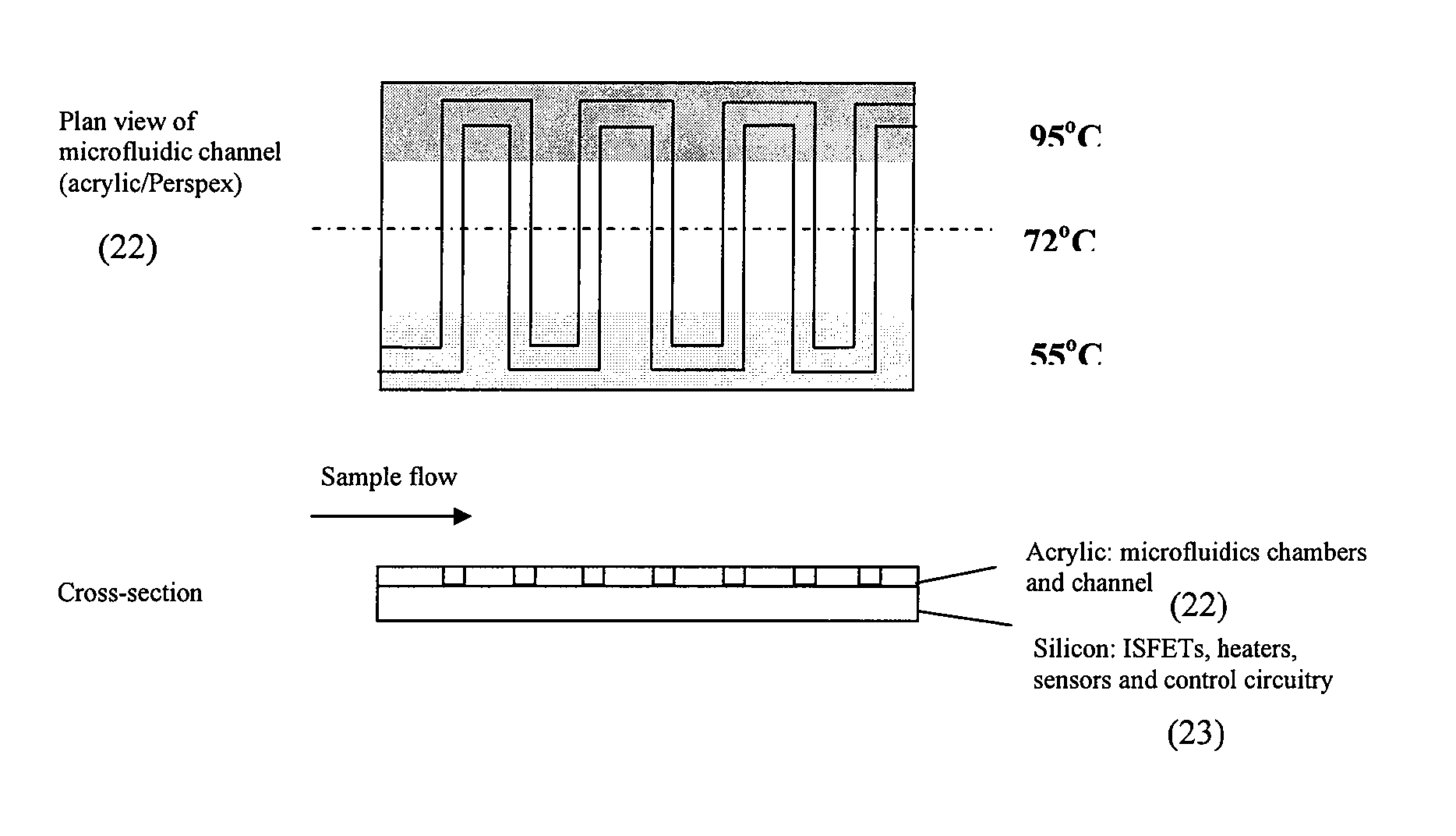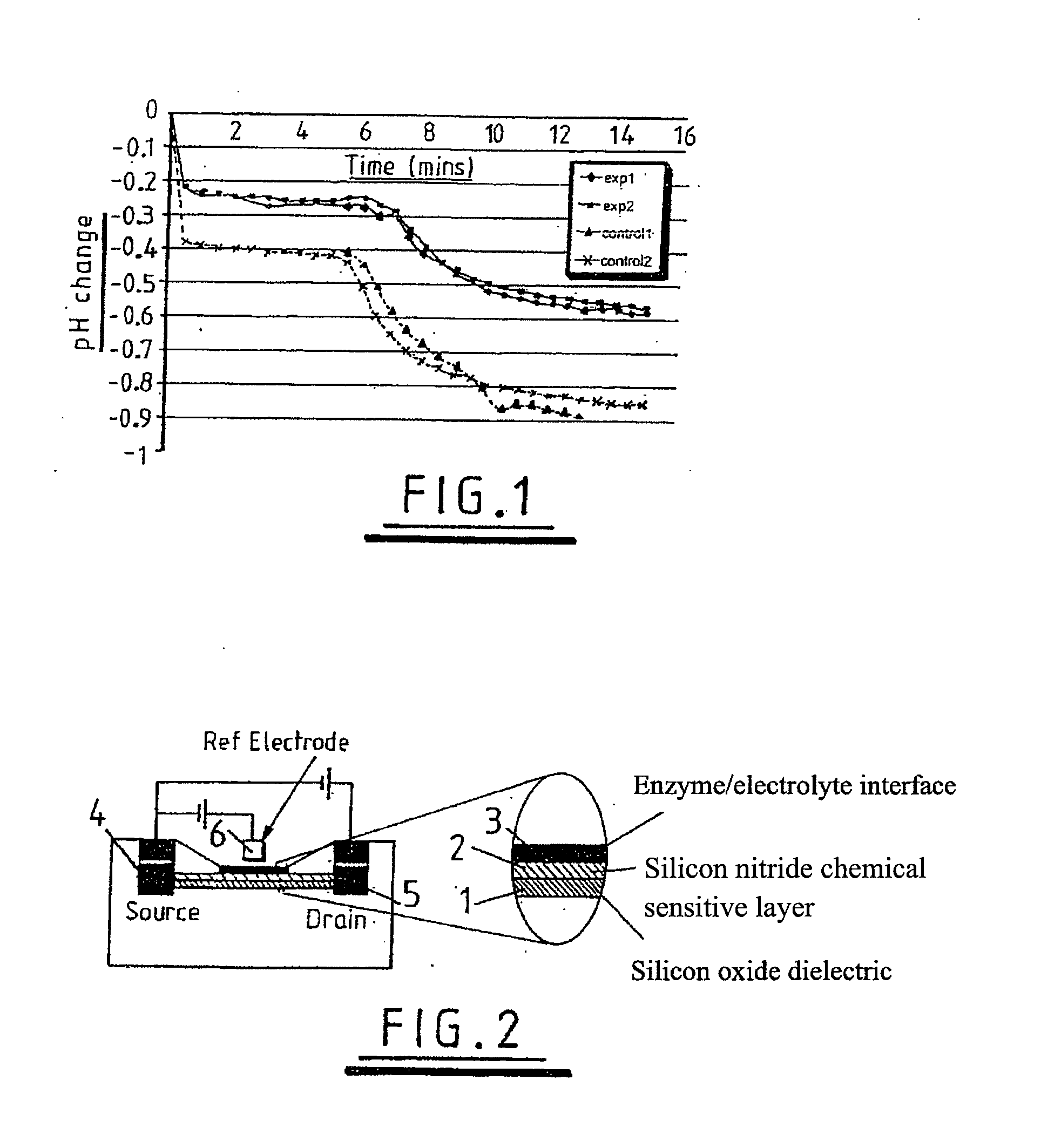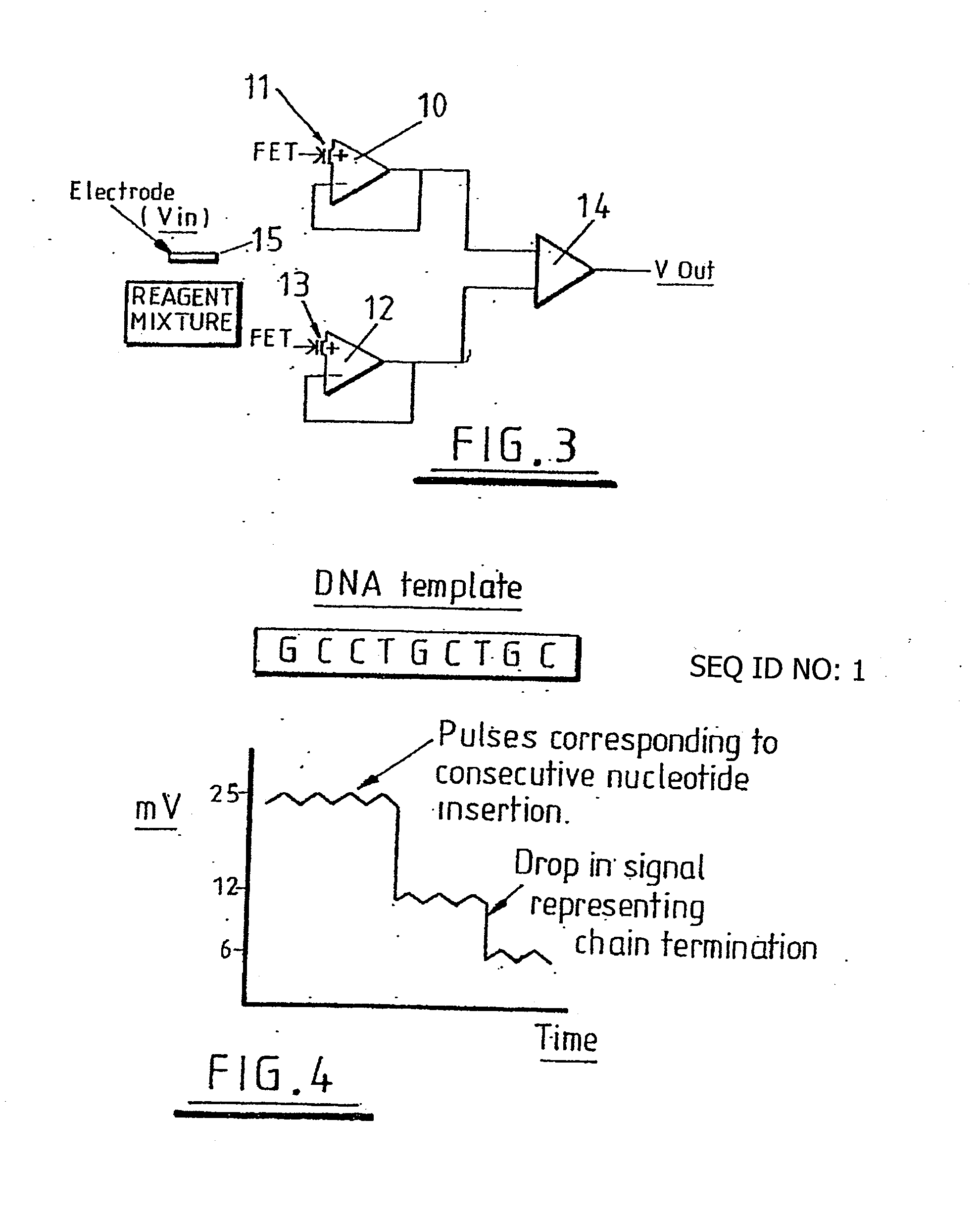Sensing apparatus and method
a technology of sensing apparatus and sensing method, which is applied in the direction of biochemistry apparatus, biochemistry apparatus and processes, instruments, etc., can solve the problems of drift and hysteresis
- Summary
- Abstract
- Description
- Claims
- Application Information
AI Technical Summary
Benefits of technology
Problems solved by technology
Method used
Image
Examples
example
[0080]FIG. 7 shows pH change with PCR cycles for a typical PCR amplification employing an amplification mixture of 10 μM Tris HCl, pH 7.5, 0.4 mM dNTPs, 2 mM Mg Cl2, 50 mM KCl, 0.05% w / v BSA, 1 U per μl Taq polymerase, 1 μM PCR primer pair, and prepared DNA template (150-150,000 copies). The hypothetical amplicon is 200 base-pairs and each dNTP incorporation releases one proton. The starting pH value is 7.5. Given the concentration of the Tris and dNTP, the buffer capacity at each pH value can be determined. The theoretical pH change can be determined by the number of protons released from the reaction and the buffer capacity at the pH where the reaction occurs.
[0081] As indicated above, the number of cycles before the pH change passes a given threshold will depend on the DNA template concentration, the higher the concentration the fewer the cycles thereby allowing quantification of template DNA by calibrating the number of PCR cycles to reach the threshold against known template l...
PUM
| Property | Measurement | Unit |
|---|---|---|
| volume | aaaaa | aaaaa |
| temperature | aaaaa | aaaaa |
| pH | aaaaa | aaaaa |
Abstract
Description
Claims
Application Information
 Login to View More
Login to View More - R&D
- Intellectual Property
- Life Sciences
- Materials
- Tech Scout
- Unparalleled Data Quality
- Higher Quality Content
- 60% Fewer Hallucinations
Browse by: Latest US Patents, China's latest patents, Technical Efficacy Thesaurus, Application Domain, Technology Topic, Popular Technical Reports.
© 2025 PatSnap. All rights reserved.Legal|Privacy policy|Modern Slavery Act Transparency Statement|Sitemap|About US| Contact US: help@patsnap.com



